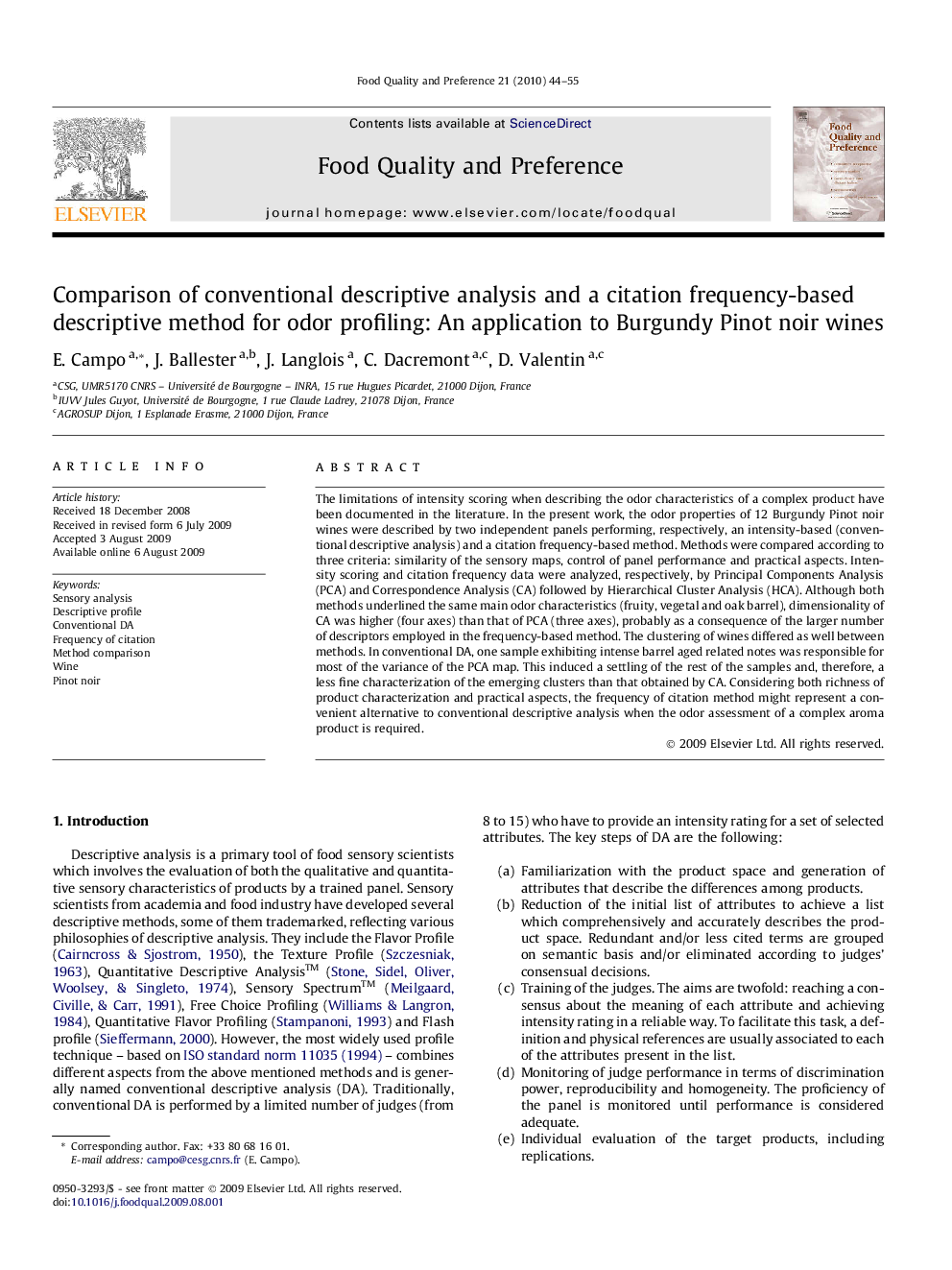| Article ID | Journal | Published Year | Pages | File Type |
|---|---|---|---|---|
| 4317855 | Food Quality and Preference | 2010 | 12 Pages |
The limitations of intensity scoring when describing the odor characteristics of a complex product have been documented in the literature. In the present work, the odor properties of 12 Burgundy Pinot noir wines were described by two independent panels performing, respectively, an intensity-based (conventional descriptive analysis) and a citation frequency-based method. Methods were compared according to three criteria: similarity of the sensory maps, control of panel performance and practical aspects. Intensity scoring and citation frequency data were analyzed, respectively, by Principal Components Analysis (PCA) and Correspondence Analysis (CA) followed by Hierarchical Cluster Analysis (HCA). Although both methods underlined the same main odor characteristics (fruity, vegetal and oak barrel), dimensionality of CA was higher (four axes) than that of PCA (three axes), probably as a consequence of the larger number of descriptors employed in the frequency-based method. The clustering of wines differed as well between methods. In conventional DA, one sample exhibiting intense barrel aged related notes was responsible for most of the variance of the PCA map. This induced a settling of the rest of the samples and, therefore, a less fine characterization of the emerging clusters than that obtained by CA. Considering both richness of product characterization and practical aspects, the frequency of citation method might represent a convenient alternative to conventional descriptive analysis when the odor assessment of a complex aroma product is required.
